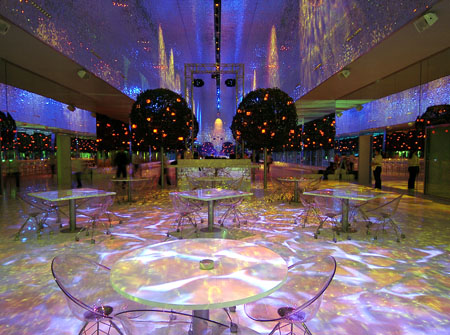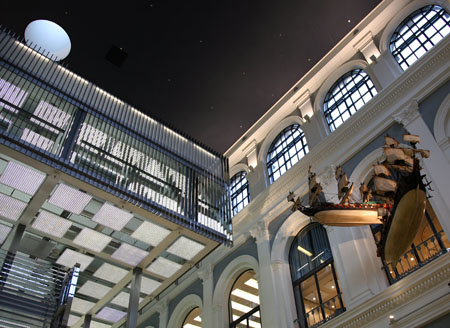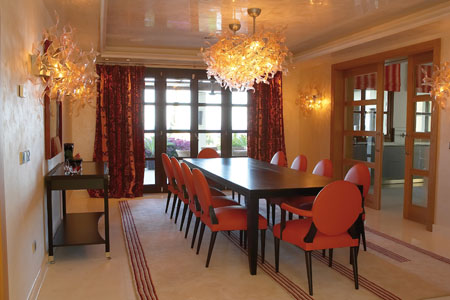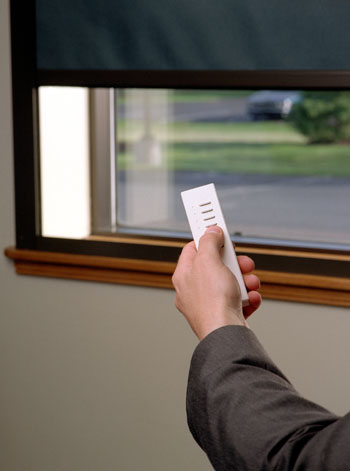|
Номер журнала: Interior
Рубрика:
Summary

Light in the interior
p.4
Interior lighting is a special area of lighting design. It is artificial illumination that largely shapes the interiors of residential and public buildings. Here it does not have to compete against the sun, and, as it goes about its artistic purpose – together with architectural forms, the texture of the materials, and the colour of the finishes and furniture - it has a powerful impact on the atmosphere of a room and the impression which that room makes. Technology is also important here. As LED technology has developed, interior lighting has risen to a new level, defined by the opportunities that exist for controlling light and for integrating it with other utilities systems. This has led to new types of lighting solution and new approaches taken by lighting designers to interior lighting.
Lighting solutions for offices have for quite some time now been a model of first-class lighting design. This means that in order to hold the interest of consumers and lighting designers, manufacturers have to think up ever more new solutions for lighting workspaces. And it is manufacturers who can claim to have made the largest contribution to the evolution of office lighting. The most interesting and promising area of progress is lighting equipment that takes into account human biorhythms. This means that it is now possible to have a positive influence on employees’ feelings and efficiency by changing the colour temperature and intensity of radiation of lighting fixtures during the course of the day.

House within a house
p.12
Back in 2003 Handelskammer Hamburg organized a competition to design additional space for the Hamburg Stock Exchange. One of the competition conditions stipulated that the structures used ‘should match the historical style of the building’. The design proposed by Behnisch Architekten involved the erection of a five-level semi-transparent ‘capsule’ inside what used to be the trading floor. The old walls were left intact; the ground-floor space has remained unencumbered; and an additional 1300 m2 of space has been created.
The architects based their choice of lighting system on considerations of controllability, reliability, and economical efficiency (which has over the last ten years become the main trend in European lighting design).
Natural light enters the space through the arched windows on the upper floors of the building. These windows face all four directions. To exploit this light to the maximum, use has been made of reflective aluminium plates installed on the side surfaces of the ‘capsule’ and of partially translucent panels constituting the floors and ceilings on all five levels. During the course of the day the semi-transparent panels capture and transmit the daylight, passing on various weather effects to within the building. Then, as it grows dark, they begin to emit light of their own. Each of the panels is a 90 x 90 cm sheet of acrylic glass in which 400 LED points have been embedded. Additionally, each sheet has 400 conic countersinks that limit the angle of emission of light. The concealed LEDs are a soft and dazzle-free light source, but at the same time the panels retain their translucence, keeping a balance between their functionality as light sources and a perspective which is open and full of air.

Empire, Tiffany, and cinema
p. 28
In today’s market in interior design there is room for almost every decorative style that has ever been conceived and even for some that never existed in the first place. Side by side with faultless antique pieces you will find fantastic cocktails put together by contemporary architects with a talent for combining elements from different periods. A quick and effective way of indicating the difference between these styles is to describe them as ‘classical’ and ‘modern’ – terms that are especially often to be found on the lips of furniture manufacturers and shop consultants, but also of estate agents selling furnished apartments. ‘Modern’ may very well be used of things that were created in different centuries and are only provisionally related to the modern interior – for instance, a chaise-longue by Le Corbusier, a sculpture by Alessandro Mendini, a sofa by Philippe Starck, and a vase by Marcel Wanders, although each of these objects belongs to a different movement in design. When it comes to ‘classical’ objects, things get even more confused. One and the same term is used to describe all the so-called palace styles – including an Art Deco table, a Tiffany lamp, and a Chippendale bureau… in short, everything that was created before the age of industrial production (and if a piece happens chronologically to coincide with the industrial age, then it will keep solemn faith with the traditions of craftwork or at least make every pretence of so doing).
To work out which is which among the many various styles is no easy task, but perfectly possible. And yet there is no need for too subtle a classification. Our mini-guide is a crib to the most popular styles. It will help you learn which details are typical of which periods and enable you to put them together in a way that looks natural. At the end of the day, Eclecticism is in fashion. And a faultlessly ordered interior is probably scenery for an adventure novel by Dumas.

‘Smart’ light
p. 44
‘Smart’ systems for automated management of utilities in buildings started to appear at the end of the 1980s, and very soon the concept of the ‘smart house’ became a synonym for comfort and safety. A ‘smart house’ can turn on your kettle in time for breakfast, fill your Jacuzzi at bedtime, turn down the sound on your acoustic system when the telephone rings, and much else besides. And yet one of the main functions of this kind of system remains control of lighting.
The main idea behind lighting management is to have lighting scripts that respond to signals from sensors registering lighting levels and occupancy and/or scripts run by a set programme. Lighting scenes and scripts are devised so as to create the atmosphere that is most suitable for a particular activity – be it relaxing, receiving visitors, working or reading, or watching a video or the TV… In order to programme lighting scripts, all light sources in the home are divided into groups. One and the same group may be used in different scenes with different levels of brightness, including for dynamic effects. The lighting scenes take into account levels of natural light outside the house, and may operate electric motors to close and open blinds and move and turn on plasma panels.
Reproduction of lighting scripts is only one of the things that is possible through lighting control. Moving light or an impression of presence may be created in particular parts of a house or apartment (the system ‘remembers’ the way in which the owners usually move about and when there is no one at home turns light on or off in various rooms). All these tasks can be tackled by lighting-control systems of different levels of complexity.
|